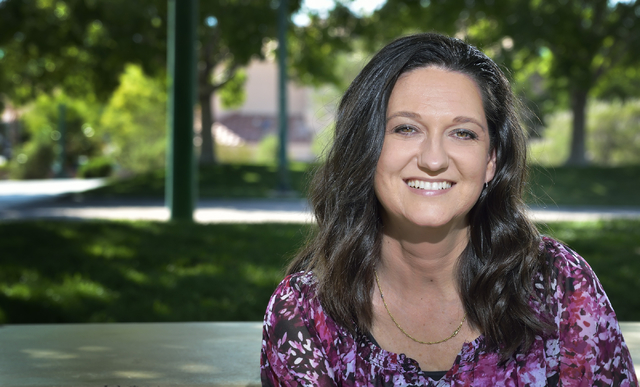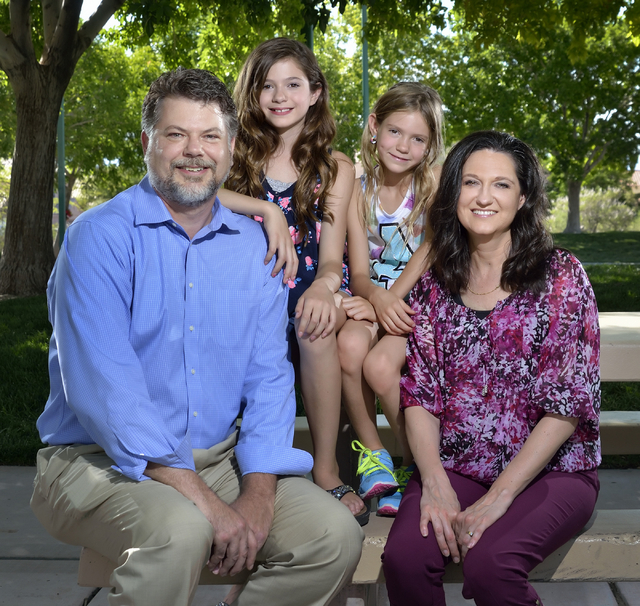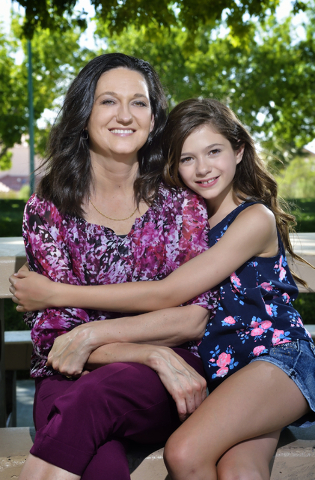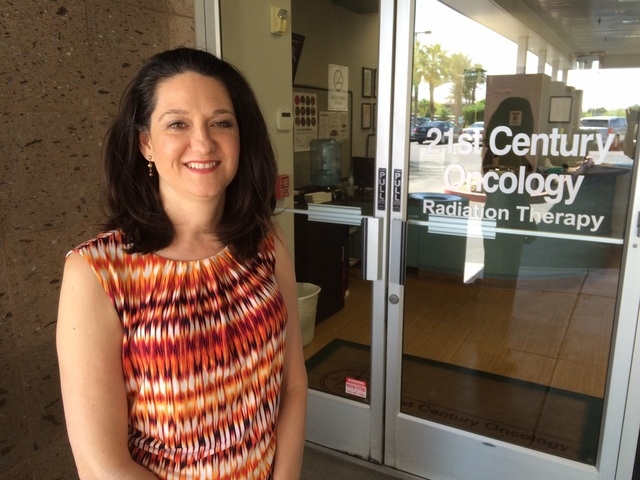Caught in time: Breast cancer diagnosis disguised blessing for valley mom
Some women would think breast cancer is a death sentence. Not Cynthia Enerson. She says breast cancer actually saved her life.
Her experience began in October 2012 when she was diagnosed with Stage 1 breast cancer. The Henderson resident said the news was unexpected and scary.
“I was afraid I wouldn’t be able to see my kids grow up,” she said of her then 9- and 4-year-old children.
Luckily, it was early stage cancer. Still, Enerson, a 43-year-old accountant, opted to undergo a double mastectomy in December 2012. To determine whether she needed chemotherapy and/or radiation, she was given a PET scan to search for any remaining cancer.
The test identified an area of concern in her colon — more cancer. She said it was not the best way to start out the new year. Along with surgery in March 2013 to remove a footlong section of her colon, doctors also performed a hysterectomy, as they’d determined her breast cancer was estrogen-based. They discovered cancer in one of her ovaries, too.
Suddenly, her cancer was considered Stage 4.
“That’s the top. There is no Stage 5,” Enerson said. “But in the same conversation, they said they were going to ‘treat this to cure,’ not to prolong life. It made you think there was hope. Yeah, I have to do chemo. Yeah, I have to do radiation, and those are going to suck, but I’m going to live.”
The fact that doctors found her cancer when they did made all the difference, she said. The surgery was followed by six months of chemotherapy for her colon and ovarian cancers. The irony that her chemo began April 1, 2013, April Fool’s Day, was not lost on her. Because the type of cancer dictated the type of chemo she was administered, her hair did not fall out.
She was treated by Dr. Mary Ann Allison, a physician with Comprehensive Cancer Centers of Nevada, about whom she said she “couldn’t say enough good things.”
“They don’t know if it was colon cancer that spread to my ovaries, or ovarian cancer that spread to my colon,” Enerson said. “I do know if my doctor had not run that PET scan, I’d have been dead. My breast cancer saved my life.”
The chemo was followed with 10 weeks of radiation at 21st Century Oncology, 2851 N. Tenaya Way, Suite 100, across from MountainView Hospital. There, Dr. Brian Lawenda, a Harvard-trained radiation oncologist, took over Enerson’s case.
His approach was one of integrative oncology to treat the whole body, including nutrition, exercise and meditation. Following his advice, Enerson said she changed how she ate, selecting fish over red meat and opting for fruits and vegetables from the organic produce aisle. She also began taking vitamins and supplements and exercising 30 minutes a day. She joined a support group and did a type of meditation that had her listening to melodic beats on headphones.
“His job wasn’t to look at me as a whole patient — but he did,” she said of Lawenda. “We would talk about exercise and diet and my stress level. He was so much more than a radiation oncologist. He was my cheerleader. … Those things were easy to change. You can change what you do, what you eat, but you can’t change your genetics.”
Lawenda, who also practices medical acupuncture, looks to plants for more than food. One of the evidence-informed complementary therapies he supports is using calendula on cancer patients. The cream, made from marigolds, was found to be superior to a pharmaceutical product in a randomized trial, he said, rendering the skin less red with less inflammation. Calendula’s properties include being a natural anti-inflammatory.
He also instructed Enerson on a deep breathing technique which, when combined with a state-of-the-art monitoring system, minimized the heart’s exposure to radiation treatment. The Calypso 4G Localization System for breast cancer can detect a patient’s deep breathing and deliver radiation only when the chest wall is farthest from that organ.
“During the breath hold, when the heart is out of the way, the radiation beam is turned on,” Lawenda said. “When the patient exhales and breathes normally, the radiation beam is turned off. There is a significant reduction in radiation exposure to the heart and underlying lung.”
Enerson has been cancer-free for more than a year. She gets regular checkups and has continued to maintain healthy living practices. She said she’s learned not to sweat the small stuff.
“It helps you change your lifestyle,” she said. “Here you’ve gotten sick for some reason, whether it’s bad luck or genetics or chemicals — who knows why cancer comes along — but at least that’s one thing that’s easy to change.”
For more information about 21st Century Oncology, visit 21stcenturyoncology.com.
To reach Summerlin Area View reporter Jan Hogan, email jhogan@viewnews.com or call 702-387-2949.





















